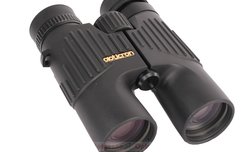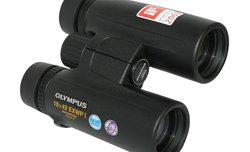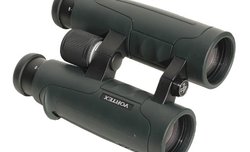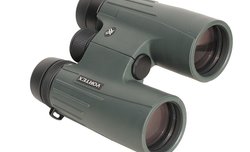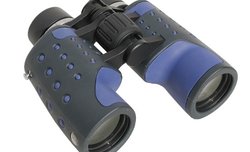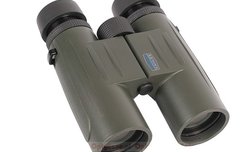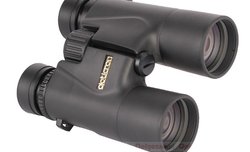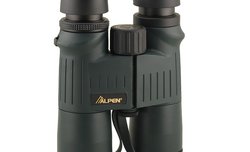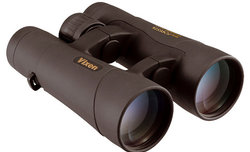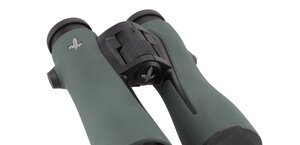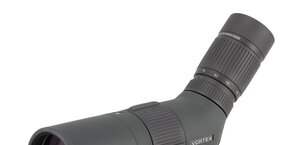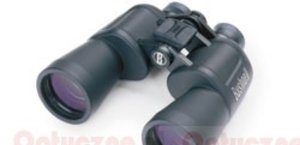Pentax company announced the launch of the new binoculars to be used on the water. The model is called the Marine 7x50 and comes with a built-in compass. What's interesting, is made in the roof Schmidt-Pechan system and has a central focusing system.
News
2010-04-27 21:17:00
Opticron Oasis 10x42 DBA - binoculars' review
The DBA Oasis series binoculars have BaK-4 glass roof prisms put in the Schmidt-Pechan system. One side of the elements is phase correction coated, the other covered by a 64-layer Oasis coating, which task is to reflect 99% of the light and to enhance efficiently the transmission level of the whole instrument. The DBA Oasis series instruments include also aspherical lenses and a very comfortable eye relief, amounting to 18 mm.
2010-04-22 16:13:18
Leica Trinovid 10x42 BN - binoculars' review
The Trinovid binoculars’ objective lenses consist of four lenses made of the highest quality optical glass, which have undergone an exceptionally precise and long-lasting grinding process. The lenses are coated with modern HDC antireflection multilayer coatings which are harder than glass, enhancing contrast and damping down flares.
2010-04-20 11:09:36
Olympus 10x42 EXWP I - binoculars' review
The EXWP-I series consists of the most expensive Olympus binoculars and includes two instruments with the parameters of 8x42 and 10x42. Both of them are roof prism binoculars made of BaK-4 glass and phase correction coated. All other optical elements are covered by antireflection multilayer coatings and additional UV coatings.
2010-04-14 12:44:06
Vortex Razor 10x42 - binoculars' review
2010-04-06 10:21:57
Vortex Viper 10x42 - binoculars' review
2010-04-02 12:54:26
Nikon Monarch 8.5x56 DCF - binoculars' review
In 2006 Nikon decided to enlarge significantly the line-up of China-manufactured Monarchs. That year they stopped producing Sporter I 8x36 and 10x36 models so Monarchs with the same parameters took their place (of course the price went up too by the way). Additionally, the offer was extended by typically night instruments with the 8.5x56, 10x56 and 12x56 parameters, aimed at hunters and astronomy enthusiasts.
2010-03-30 10:15:47
Swift Optics 962 Ultra Lite 10x42 - binoculars' review
As it is touted by the producer, the Ultra Lite series are the only binoculars that have two kinds of special rubber on the barrel – one to amortize efficiently any falls, even from significant heights, and the other to ensure a comfortable, reliable hold. As a result the binoculars are, in our opinion, very interesting and original; the device differs greatly from other competitors’ products.
2010-03-27 10:31:55
Kahles 10x42 - binoculars' review
2010-03-24 12:19:26
Opticron Classic 10x42 BGA - binoculars' review
The Classic series of Opticron consists of roof prism binoculars with the following parameters: 7x36, 8.5x36, 8x42, 10x42, 10x50 and 12.5x50. These instruments use BaK-4 glass prisms put in the Schmidt-Pechan system in which reflecting surface is covered by a special Oasis coating, which increases the transmission level of binoculars.
2010-03-22 09:10:30
Alpen Optics Apex 8x42 - binoculars' review
2010-03-19 09:17:27
Carl Zeiss Conquest 10x40 T* - binoculars' review
2010-03-16 12:25:11
Completly new Nikon EDG binoculars
In March 2008 Nikon announced new EDG series of binoculars. They never appeared in shops in Europe. Today Nikon announced the launch of the new and redesigned EDG 8x32, 10x32, 7x42, 8x42 and 10x42 binoculars.
2010-03-16 11:36:26
Vortex Stokes DLS 10x42 - binoculars' review
2010-03-11 11:44:50
Vixen New Foresta 10x50 DCF and 8x56 DCF
Astrozakupy.pl e-shop has just informed us about two new binoculars belonging to a serie New Foresta introduced in October 2009. These new binoculars are: Vixen New Foresta 10x50 DCF and 8x56 DCF.





